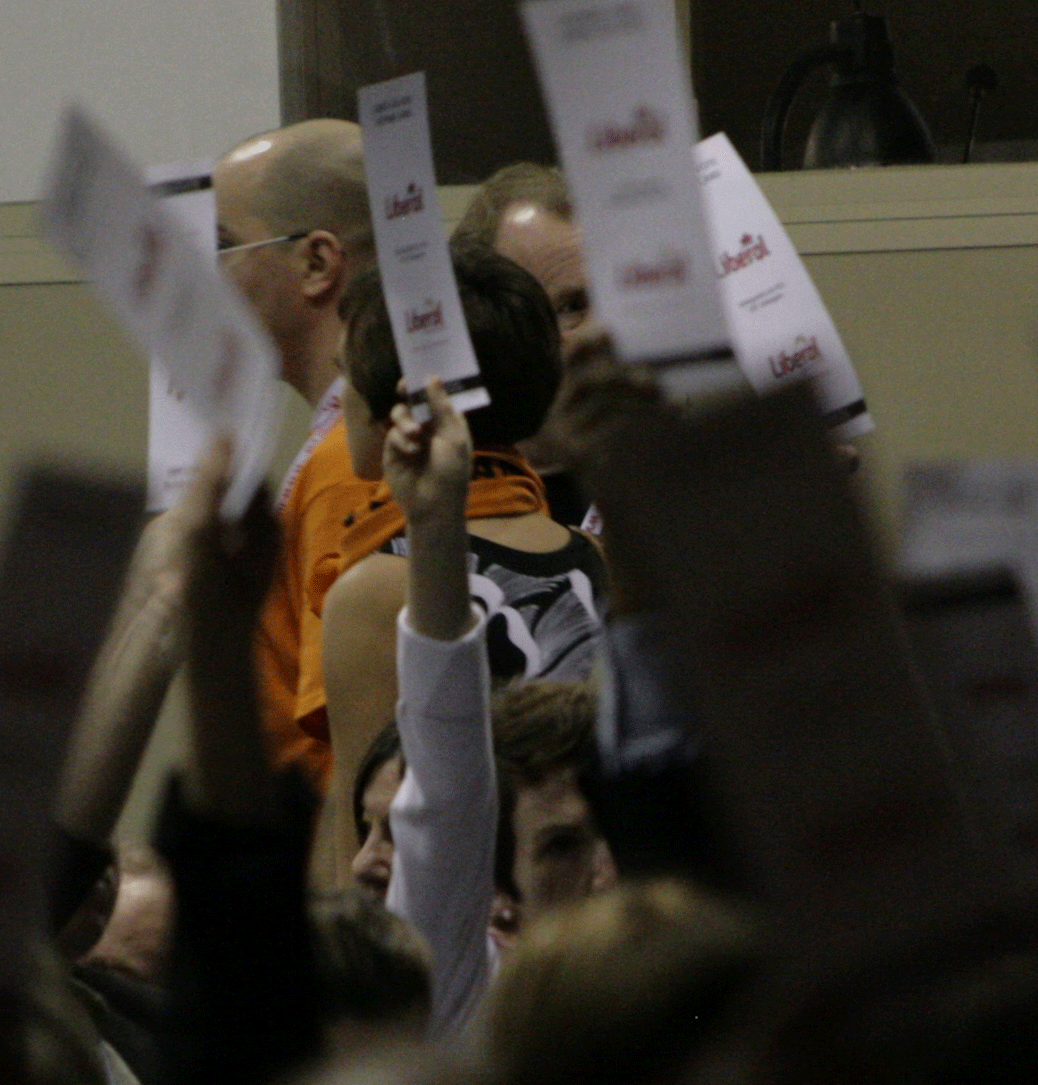Political Perspectives is produced by the students and faculty of Carleton University's School of Journalism and Communication, Canada's oldest journalism school.
2nd
MAY
Death of a tradition
Posted by padams under All, Political Strategy
Paul Adams
Paul Adams is blogging the federal Liberal convention in Vancouver this weekend.
This morning, Liberals adopted a new system of direct voting by party members to choose their leaders, marking the end at the federal level of a peculiarly Canadian institution that originated with the Liberal Party.
Leadership conventions have produced some of the most dramatic moments in the political history of the past half-century. John Diefenbaker defiantly refusing to drop off the ballot at the Progressive Conservative convention of 1967 even after the party had made it clear it no longer wanted him. Pierre Elliott Trudeau winning with 51% of the vote on the fourth ballot of the highly-polarized 1968 Liberal convention. Sinclair Stevens’ dramatic march across the convention floor to secure the unlikely nomination of Joe Clark as PC leader in 1976. And of course Stéphane Dion’s stunning victory over Bob Rae and Michael Ignatieff in 2006.
Until 1919, Canadian party leaders were chosen as they usually are in Westminster-style systems by the parliamentary caucus. When Sir Wilfrid Laurier died in 1919 in the run-up to a policy convention, the party executive decided to use the event to choose his successor, who turned out to be William Lyon Mackenzie King. Over the years, most other Canadian parties adopted a variation on the Liberal model.
Superficially, Canadian leadership conventions look a lot like the conventions the American parties use to choose their presidential candidates, but they are fundamentally different in several ways.
First of all, Canadian parties use a secret ballot. That means that once they are selected, by and large delegates to Canadian leadership conventions have been autonomous. In American conventions, delegates vote in public, meaning that they are at the least in theory accountable to those who chose them, and certain exposed to political pressures from party power-brokers. In many cases, they are bound by state law or state and national party regulations that require them to vote, especially in early balloting, in specific ways.
The most famous instance of the impact of the secret ballot was the so-called “Flora effect” in the 1976, when more delegates were said to have gone into the balloting stations pledged to Flora MacDonald and wearing her buttons, than she received actual votes.
Second, the American parties, especially in the last half century, have adopted increasingly open mechanisms to choose delegates. Most Americans over 18 can participate in choosing one of the major party party candidates through a primary or caucus if they choose, as tens of millions of people did last year.
In Canada, fewer than 5% of voting-age Canadians belong to any party, though in hotly contested races, the size of a party may often double, triple or more, as new members are recruited in order to get them to vote for the various candidates. This is, of course, one reason that defenders of the system have argued for keeping it.
Third, most Canadian parties adopt a multi-ballot system in which candidates who fare poorly on the initial round of delegate voting are forced to drop off, and the race is gradually culled, often to two remaining front-runners. In the United States candidates are not forced to drop off by the rules.
This system has sometimes produced paradoxical results. Arguably, John Crosbie might have beaten both Joe Clark and Brian Mulroney if he had not been forced off the ballot by the rules in the 1983 convention.
More to the point, it seems unlikely that Stéphane Dion would have won the 2006 convention, having come into the convention with the support of just 17% of delegates, had Bob Rae not been forced off the final ballot by the rules.
In recent years, most Canadian political parties have moved to more inclusive and less expensive processes — even if they lost the opportunity for the major television coverage conventions often bring.
Adam Radwanski on the Globe and Mail’s website has given an admirably clear explanation of why the Liberals needed to abandon the system of delegated conventions to choose their leaders.
Though the Liberals debated the change at their Vancouver biennial meeting this morning, the truth is that there was an air of inevitability to the abandonment of the process they invented 90 years ago.
Too costly. Too divisive.
But it was fun to watch while it lasted.
Paul Adams, a former political correspondent for the CBC and Globe and Mail, is a member of Carleton’s journalism faculty and executive director of EKOS Research Associates. He is researching a book on the Liberal Party.
Post Meta
-
 May 2, 2009
May 2, 2009 -
 All, Political Strategy
All, Political Strategy -
 No Comments
No Comments
-
 Comments Feed
Comments Feed


